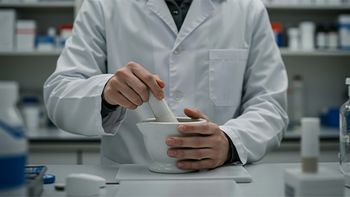
Where will the next life sciences business cluster grow?
State and regional economic-development authorities compete fiercely for siting new pharma enterprises, and holding onto the ones they have. But pharma’s stupendous growth in investment is giving all regions a boost
The US pharma industry has been on a roll for the better part of a decade (and, arguably, for much longer) in sales revenue, capital investment, and Wall Street interest. Once the Human Genome Project unlocked many of the mysteries of human DNA (officially, in 2003), pathways were created for developing drugs with a genetic or biomolecular component. Equally revolutionary developments like CAR-T therapies and CRISPR genetic manipulation have only added to the momentum.
As a result, biotechnology has been one of the favorite targets for venture capital and Wall Street stock pickers. According to statistics from the Alliance for Regenerative Medicine, the cellular and genetic therapy (CGT) component of this biotech revolution alone garnered nearly $20 billion in funding in 2020—double the previous year—even though only a handful of CGT products have reached commercial stage.
This frothy level of funding has intensified the interest of state and regional economic development authorities, who are charged with attracting business growth in their territories. Each region—even down to the level of individual counties—has created a bundle of incentives to draw pharma interest. The pharma companies, in turn, run their own calculations on the best fit for where they should put their business development dollars. Who is winning this high-stakes game, and why?
Clusters and hubs
Major corporate real estate organizations have published rankings for site selection in life sciences for years. The JLL Life Sciences Real Estate Outlook, for example, published its latest assessment in 2020, giving the top positions to perennial favorites, the Boston area (No. 1), and the San Francisco Bay area (No. 2). (See Table 1; a 2021 ranking is expected later this year.) “[T]he strength of the Boston and San Francisco life sciences real estate markets has not precluded the growing strength of newer hotspots. New York, Los Angeles and Philadelphia have all increased their cluster scores since 2019, reaching new peaks in venture capital funding and life sciences employment," noted the report authors.
Indeed, in early 2021, JLL followed its annual rankings report with another, “Life Sciences Emerging Markets Index.” Using somewhat different ranking criteria, the company identified a number of locales with life sciences “momentum,” based on GDP growth, millennial population and housing growth. Up-and-comers were western North Carolina and South Carolina (Charlotte-Concord-Gastonia); Washington (Seattle-Tacoma-Bellvue); and a near-tie between the Denver, CO, metro and metro Austin, TX. (See Table 2 below.)
“The incredible dynamism of the industry is jump-starting new markets that are of growing interest to life sciences investors and companies alike thanks to their lifestyle, cost of living and demographic advantages,” the JLL report concludes.
Governmental economic development authorities welcome nearly any kind of business investment in their regions—that brings jobs, growth of a tax base, and many sorts of support services. But within life sciences, a special emphasis is put on startup companies that are beginning the R&D journey from an idea to an approved, commercial healthcare product. And because much pharma development originates in translational research—turning patient care experience into product development, there has been an emphasis on building out from healthcare facilities and academic centers—the so-called “meds and eds” combination. Cities or regions with a concentration of healthcare and higher education have been capitalizing on these assets for years now, transforming or diversifying cities ranging from Pittsburgh, PA, to Houston to New York City into pharma R&D hubs.
One successful approach in this effort is the development of incubator facilities—a combination of linking academic researchers with real estate development of lab space, which can be rented to the startup company. If research progresses successfully (and if the funding grows rapidly enough through investment rounds and winning research grants), the startup company can soon seek its own facility.
Incubators for life sciences need, among other things, wet lab space—dedicated buildings with the right combination of air and water controls, power and structural support. “Not all commercial buildings can accommodate these needs,” says Tara Mulrooney, a construction legal analyst and project manager at the New York law firm Zetlin & De Chiara LLP. “Facilities with wet labs need specialized floors and ceilings to accommodate mechanical ductwork, among other things. It’s very different from most office buildings.”
The incubator concept also happens to mesh well with the progression that many life sciences startups go through—developing a product or technology to the point where it becomes attractive to a major pharma company, which acquires the startup. At that point, the startup simply moves out of the incubator.
Along with the offer of suitable lab space, economic development authorities are aggressive in putting together financial incentives to attract a company. These can take the form of grants or low-interest loans, on one side, and tax incentives on the other. Ulrich Schmitt, a principal at KPMG’s State and Local Tax Practice, notes the rise of saleable or refundable R&D tax credits: Startup companies can go for years without generating net income (which could be taxable), but in the meantime, spending on R&D could generate a credit which could be sold to another company, thus bringing needed revenue into the startup. “As many as a dozen states now have programs to allow for saleable credits, offsets of employee withholding taxes, licensing taxes or refunds of fees paid to FDA,” he says.
KPMG worked with the Tax Foundation, a Washington public affairs organization, to assess the overall impact of these incentives. In
An important distinction to be made with these incentives is that they are targeted at startups. “Mature” companies (as the Tax Foundation report labels them) can see effective tax rates ranging up to 20.4% (although Hawaii still has an effective negative rate of -13.2%.) Moreover, the taxation structures differ for R&D facilities, manufacturing plants, corporate headquarters and distribution centers, all of which have differing combinations of employment, capital investment, real estate requirements and revenue accounting.
While taxation is frequently the No. 1 incentive mentioned by state authorities, the reality is that it is not the No. 1 factor in where pharma locates its facilities. “I would say that tax policy is somewhere in the middle of the list, No. 4 or 5 out of 10,” says Schmitt. “The top consideration is the availability of labor—either a workforce, or the research talent. Cost of doing business, supply chain factors on transporting goods into or out of the facility, and the existence of a cluster of similar companies [to provide support services]—these are usually more important.”
Finding talent
Indeed, numerous surveys point to the importance of workers and research leaders in siting a facility. The proximity of top-ranked research universities is a key marker; some surveys tote up the number of NIH or NSF grants to a school as a measure of the pool of available research talent.
But the workforce includes others besides star researchers—specifically, the trained personnel for operating lab equipment or production lines. This is especially true when a pharma company graduates from a successful R&D program to commercializing its discoveries. At this year’s annual meeting of the Biotechnology Innovation Organization (BIO; the meeting was held virtually during June), a survey produced by TEConomy, a consulting firm, and the Coalition of State Bioscience Institutes (CSBI) focused on employment trends. (See Figure 1.)
While the proportion of “high-skilled” jobs (scientist, engineer, IT and data science) is, as expected, higher for biotech than for industrial businesses as a whole (47% vs 27%), the report showed that “middle-skill” categories—production, maintenance, technician—were also higher (34% vs 28%). “We need technicians as well as people with PhDs,” is how one industry executive sums up the matter. This point of view is motivating CSBI and others to expand the training programs offered at community colleges, or for associate degree programs, and that, in turn, is changing the mix of resources that state or regional educational organizations provide.
All that being said, educational and professional development organizations are still reacting to the changed environment wrought by the 2020 Covid-19 pandemic, specifically, the work-from-home movement. City managers are losing sleep wondering whether their downtown office complexes will remain empty or only marginally utilized; at the same time, professional workers are wondering what path their careers will follow, with or without the work-from-home trend.
According to JLL analysts who spoke with Pharmaceutical Commerce, the life sciences industry is somewhat insulated from the work-from-home trend. “Life sciences is much more impervious to work from home, as experimentation and trade secrets are much more limited to on-site work and collaboration is much more effective on-site,” says JLL. “What could raise the value of currently secondary locations is the massive current surge in strength and funding for the industry as a whole—the rising tide lifting all boats.”
One exception to the need for on-site worker presence is the trend toward data management in life sciences. Whether for analyzing a clinical trial, monitoring a drug’s promotional campaign or overseeing the flow of products through distribution channels, more and more pharma activities are driven by digitized, data-generating processes. That data science work can be done remotely, and the shift toward cloud computing for data analysis only accelerates this trend. KPMG’s Schmitt notes that pharma companies have in recent years been getting smarter about utilizing “shared services” to manage a variety of back-office or business analysis processes.
“Life sciences is learning better how to separate out business functions—manufacturing in one place, R&D in another and data centers in a third. Do the back-office functions needs to be in New York or New Jersey, or can costs be reduced by moving some of them to Tampa, Florida?” Schmitt says. Potentially, the shared-service model, where some of these functions are managed by third parties with multiple clients, can further cut costs.
If nothing else is certain, the site selection process that pharma companies go through needs to be broad-based; no one factor overrules the others. And, at least for as long as the pharma industry continues its booming growth, many regions of the country will benefit.
- Nicholas Basta is Editor Emeritus and Founder, Pharmaceutical Commerce
Newsletter
Stay ahead in the life sciences industry with Pharmaceutical Commerce, the latest news, trends, and strategies in drug distribution, commercialization, and market access.





